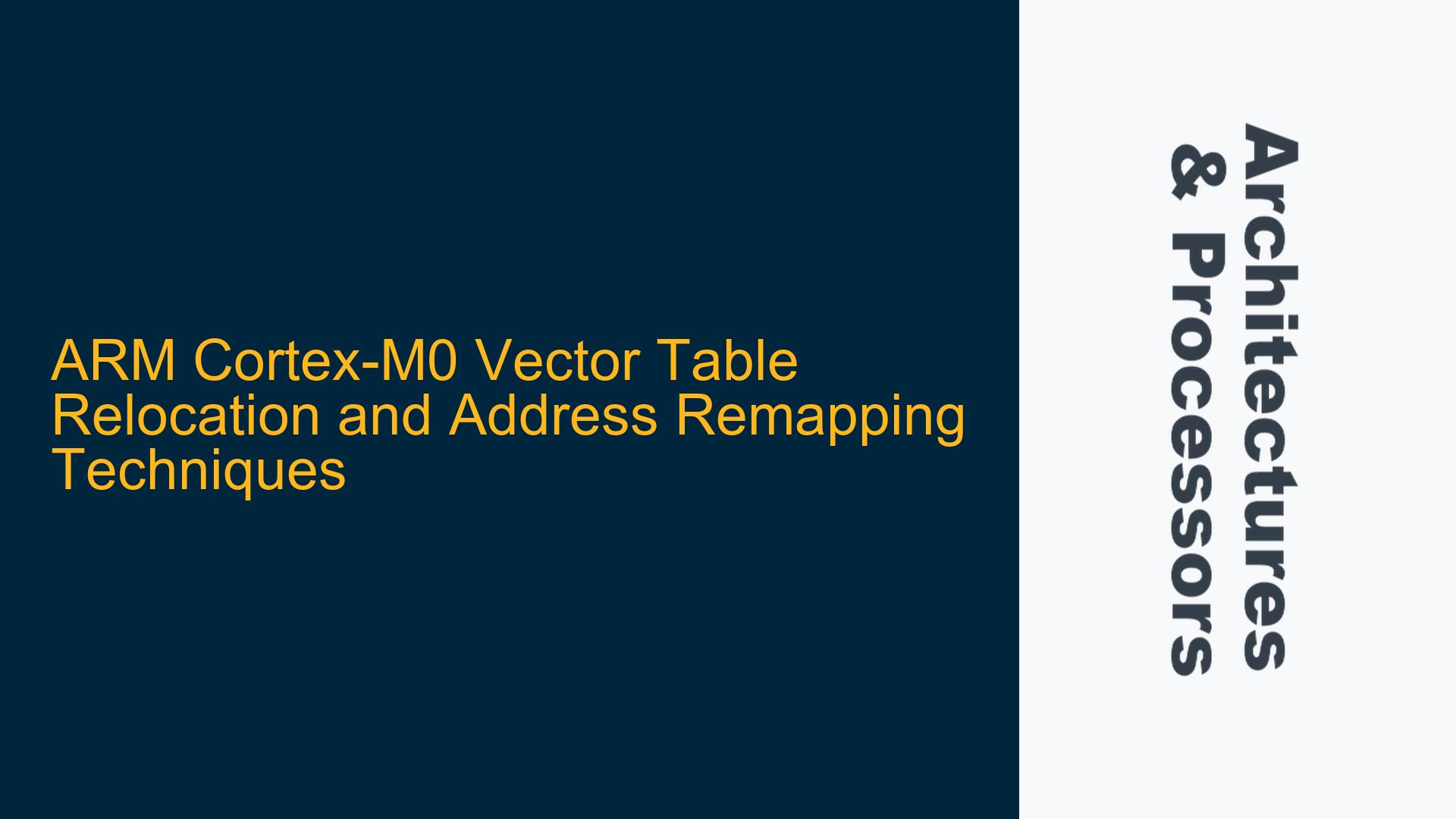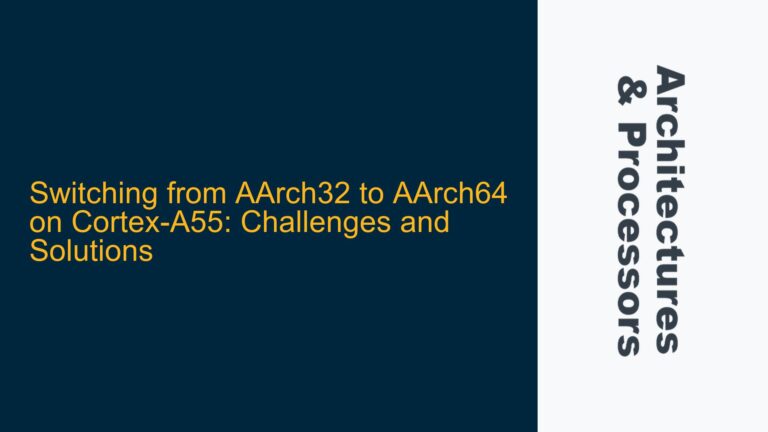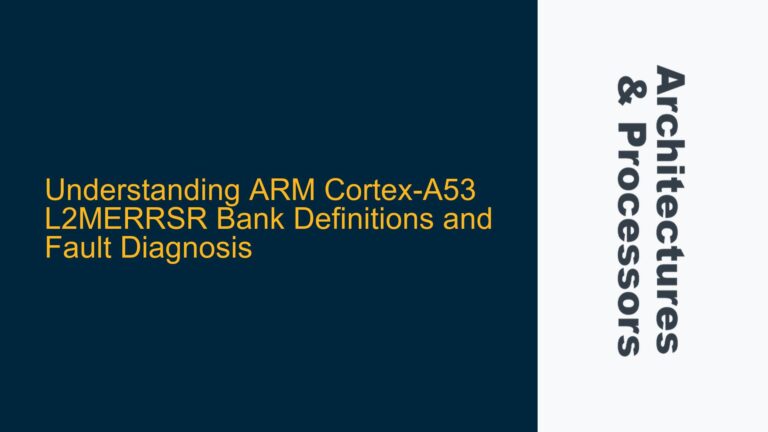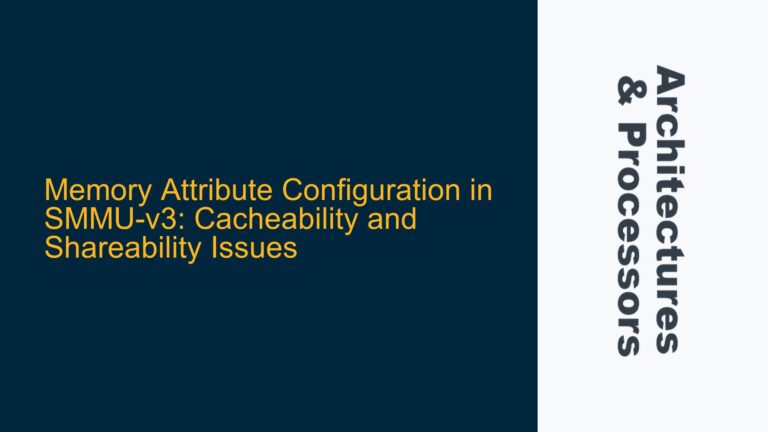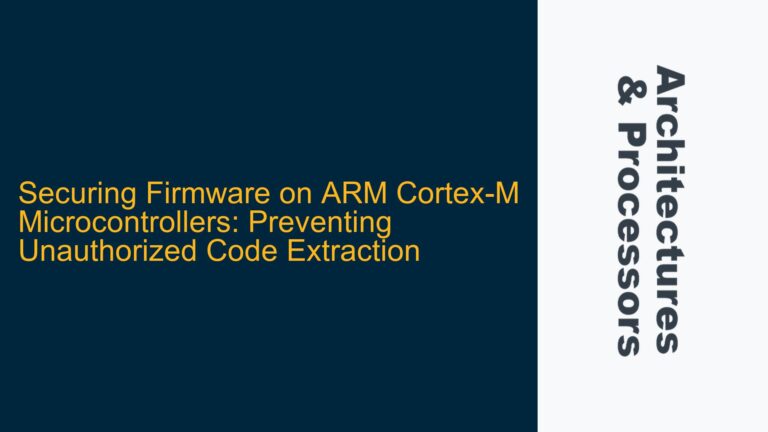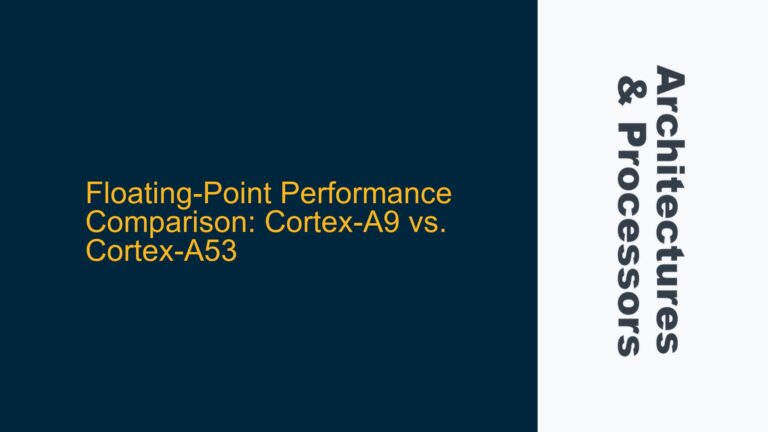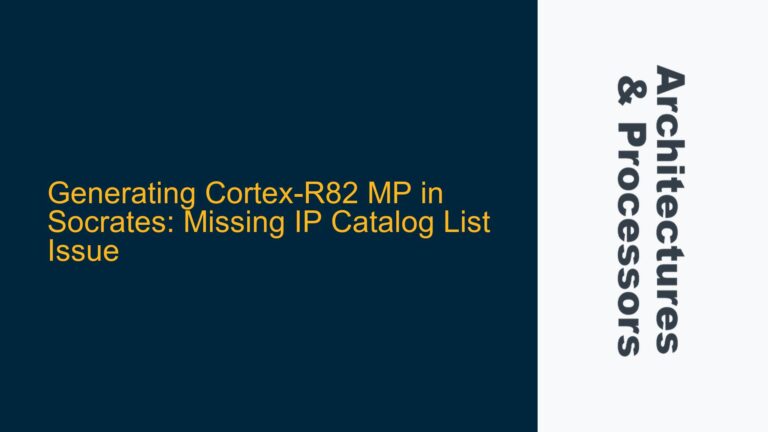Cortex-M0 Vector Table Fetch Behavior and VTOR Absence
The ARM Cortex-M0 processor, unlike its more advanced siblings such as the Cortex-M3, M4, and M7, does not feature a Vector Table Offset Register (VTOR). This architectural decision has significant implications for how the processor handles interrupt vectors. On the Cortex-M0, the vector table is always fetched from the fixed address 0x00000000 when an interrupt occurs. This behavior is hardwired into the processor and cannot be changed via software configuration. The absence of VTOR means that developers cannot dynamically relocate the vector table to another memory region, such as SRAM or a different flash bank, without resorting to hardware-based address remapping techniques.
The vector table in the Cortex-M0 contains the initial stack pointer value and the reset vector, followed by the addresses of exception and interrupt handlers. During power-up or reset, the Cortex-M0 fetches the initial stack pointer and reset vector from the first two entries of the vector table located at 0x00000000. Subsequently, when an interrupt occurs, the processor fetches the corresponding interrupt handler address from the vector table at the same base address. This fixed addressing scheme simplifies the hardware design but limits flexibility in systems where the vector table needs to be relocated, such as in bootloader scenarios or multi-image firmware architectures.
Memory Remapping Mechanisms and Bootloader Integration
To overcome the limitations imposed by the fixed vector table address, developers often employ memory remapping techniques. Memory remapping is a hardware feature provided by many microcontrollers that allows the physical memory regions to be logically rearranged at the bus level. This means that a memory block, such as SRAM or a secondary flash bank, can be mapped to the address 0x00000000, effectively making it the new location for the vector table.
In a typical bootloader scenario, the system might have two separate firmware images: a bootloader and an application. The bootloader resides in a primary flash bank, while the application resides in a secondary flash bank or SRAM. At power-up, the bootloader needs to execute first to perform system initialization, firmware validation, and potentially update the application firmware. To achieve this, the bootloader’s vector table must be accessible at 0x00000000 during the initial boot phase. Once the bootloader completes its tasks, it needs to hand over control to the application, which requires the application’s vector table to be accessible at the same address.
This handover is achieved through memory remapping. Initially, the bootloader’s flash bank is mapped to 0x00000000. The bootloader code executes, performs its duties, and then copies the application’s vector table to SRAM. After copying, the bootloader remaps the SRAM to 0x00000000, making the application’s vector table active. Finally, the bootloader jumps to the application’s reset handler, which is now located in the remapped SRAM. This sequence ensures that the Cortex-M0 always fetches the correct vector table for the currently executing firmware image.
The remapping process is typically controlled by a memory management unit (MMU) or a dedicated remap controller within the microcontroller. The remap controller modifies the address decoding logic of the bus matrix, redirecting accesses to 0x00000000 to the desired memory region. For example, if SRAM is remapped to 0x00000000, any access to this address range will be serviced by the SRAM instead of the original flash memory. This redirection is transparent to the Cortex-M0 core, which continues to operate as if the vector table were always located at 0x00000000.
Implementing Vector Table Relocation with SRAM Remapping
To implement vector table relocation using SRAM remapping, developers must follow a precise sequence of steps to ensure correct operation. The first step is to configure the memory remapping controller to map the bootloader’s flash bank to 0x00000000 at power-up. This ensures that the Cortex-M0 fetches the bootloader’s vector table during the initial boot phase. The bootloader code then executes, performing any necessary system initialization and firmware validation.
Once the bootloader is ready to hand over control to the application, it copies the application’s vector table from its original location (e.g., a secondary flash bank) to SRAM. The vector table copy must include all necessary exception and interrupt handler addresses, as well as the initial stack pointer value. After the copy is complete, the bootloader configures the memory remapping controller to map the SRAM to 0x00000000. This remapping operation must be performed atomically or with appropriate synchronization to prevent the Cortex-M0 from fetching an inconsistent vector table.
With the SRAM now mapped to 0x00000000, the Cortex-M0 will fetch the application’s vector table from SRAM when an interrupt occurs. The bootloader then performs a final jump to the application’s reset handler, which is located in the remapped SRAM. This jump transfers control to the application, which begins executing its main code. The application’s interrupt handlers will now be correctly invoked when interrupts occur, as the vector table in SRAM contains the appropriate addresses.
It is crucial to ensure that the SRAM used for the vector table is initialized and remains unchanged during the application’s execution. Any corruption of the vector table in SRAM could lead to undefined behavior, such as incorrect interrupt handling or system crashes. Developers should also consider the timing of the remapping operation, ensuring that no interrupts occur during the transition between the bootloader and the application. This can be achieved by disabling interrupts during the remapping process and re-enabling them only after the application has taken control.
In summary, while the Cortex-M0’s lack of VTOR presents challenges for vector table relocation, these can be effectively addressed through careful use of memory remapping techniques. By leveraging the microcontroller’s memory management capabilities, developers can create flexible and robust firmware architectures that support bootloaders, multi-image firmware, and other advanced features. The key to success lies in understanding the hardware’s address decoding logic, ensuring proper synchronization during remapping, and maintaining the integrity of the vector table throughout the system’s operation.
